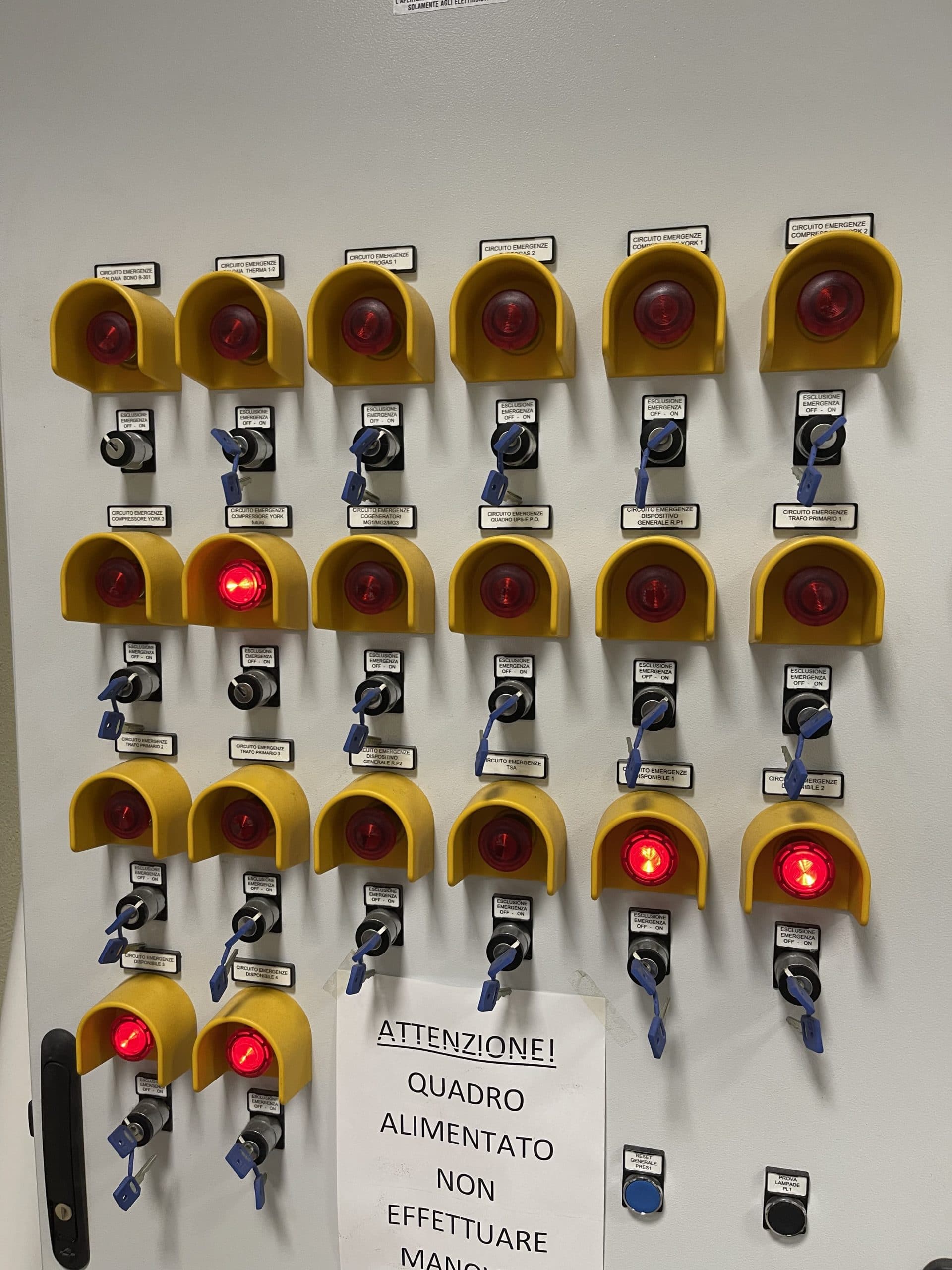Last edit: 25/07/2023
What is the emergency button for?

The function of the Emergency Stop is:
4.1.1.1 […] to avert actual or impeding emergency situations arising from the behavior of persons or from an unexpected hazardous event.
Its function is not to reduce the risk present in a Hazardous Situation, as intended for protection devices, but to stop the operation of a machine as quickly as possible if it causes damage or accidents, thus giving place in an Emergency Situation. The term Emergency Situation means a Hazardous Situation, caused by human interactions or as result of external influences, which needs to be urgently ended or averted due to the gravity of the consequences of this event.
The Emergency Stop should not be considered as a substitute for other protection measures:
4.1.1.3 […] is a complementary protective measure and shall not be applied as a substitute for safeguarding measures and other functions or safety functions.
In front of a conveyor belt, which presents risks of crushing, the problem is not solved by installing an emergency rope!
In addition, the emergency push button cannot be placed behind a door because activating it requires two actions: opening the door and activating the function. If the problem is the prevention of unintended actuation see paragraph 4.5 of the Standard.
What movements should be stopped? Is it possible for the emergency to activate the movements?
The emergency stop does not amount to a de-energization of the machine: only hazard movements and operations are stopped.In addition, if safety involves the activation of a movement, this is not only permissible but mandatory: "the emergency stop function can initiate other functions, other than stopping, to minimize the risk of harm (e.g reversal or limitation of motion, rate of braking) ".
What is The Span of Control?
The standard EN 13850 of November 2015, introduces the concept of span of control of emergency stop device. This expression identifies the portion of the machine area on which the emergency stop device takes effect.
4.1.2 The span of control of each emergency stop device shall cover the whole machine. As an exception, a single span of control may not be appropriate when, for example, stopping all linked machinery could create additional hazards or unnecessaryly affect production.
A machine should be covered by a single span of control. However, not necessarily all emergency buttons have to stop the entire production line. In this case, you define several span of control associated with different emergency stop devices. Each span of control can cover one or more sections of a machine, an entire machine, or groups of machines. The use of a single span of control on multiple machines may not be indicated when the blocking of all machinery connected to this area causes further hazards or affects production in an unnecessary way.
The assignment of multiple span of control shall be made so that each of them is easily recognizable and associated with its emergency stop device. By doing so in case of danger you are able to immediately resort to the stop device of interest. In this regard, at the end of paragraph 4.1.2.1 of the rule:
More than one span of control can be applied if the spans of control shall be clearly defined and identifiable and the emergency stop devices shall be readily associated with the hazard requiribg an emergency stop. In this regard, at the end of paragraph 4.1.2.1 of the standard:
4.1.2.1 So far as practicable, emergency stop devices with different spans of control shall not be located near each other.
Actuation of an emergency stop device in one span of control shall not create additional hazards or increase the risk in any span of control, and shall not prevent the initiation of an mergency stop functions. In addition, they shall be defined taking into account adjacent hazards.
What level of reliability should the Emergency Stop function have?
4.1.5.1 […] Determination of the Performance level (PL) or SIL required should take into account the purpose of the emergency rest function, but the minimum required level is PLr c or SIL 1.
This is a novelty introduced in the latest edition of the standard. The performance level depends on the type of machinery; in any case, the minimum level is PL-c.